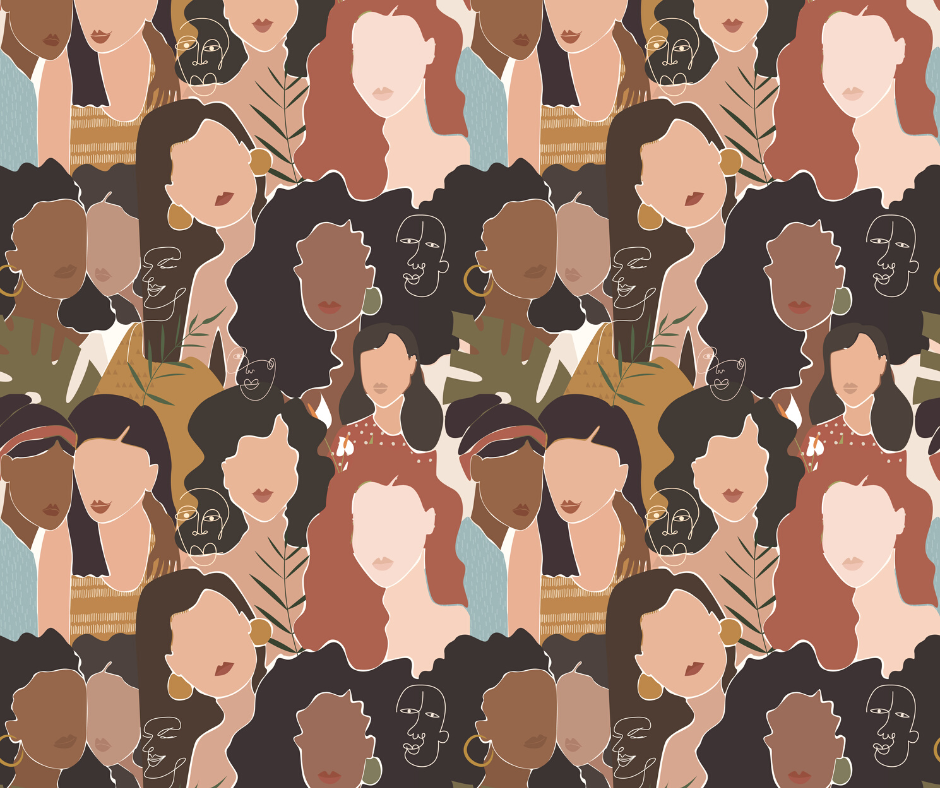“Not seeing color” is a common way to announce we’re all the same under our skin, and to point out we’re not racist. But as author and communication professor-emeritus ANA K. WRENN explains, racial colorblindness, in books and beyond, isn’t the ideal we may think it is.
Growing up in the US-Southern Appalachian Mountains, I played capture the flag, a rambunctious game where the neighborhood kids divided into teams and raced around in the middle of the street, trying to seize the opposing team’s flag.
Whoever crossed into the enemy’s territory and snatched up the white flag would wave it wildly, hooting and naming themselves “WINNER!”—and the other team “LOSERS!”
Now, I never captured the flag, no matter how much I wanted to. A short, pudgy kid, and one of the few females in my neighborhood, I couldn’t out sprint, out maneuver, or out muscle the boys. Oh, but how I wanted to wave that white flag in victory and earn naming rights.
The flag itself was never interesting to look at. Usually, it was an old colorless t-shirt tied to a stick from the nearby woods. Still, that flag, that game, has stayed with me, and it gets me thinking about all sorts of flags.
VERBAL FLAGS
As a communication professor, I spent decades studying the supposedly colorless verbal flags we wave.
“I don’t see race.”
“We’re all the same under our skin.”
“In the dark, we all look alike.”
Just like I’d been taught the value of waving a captured flag in a game, I’d also been taught about waving the flag of racial colorblindness with great gusto and pride. I grew up in a community where (some) white people complimented, “I don’t think of you as Black.” And good (white) girls could be heard proclaiming, “I’m color blind.”
It took me years to learn that a racially colorblind approach to communication helps strip “non-white people of their uniqueness…negating their experiences, traditions,” Dani Bostick writes.
Before we continue, I want to ensure you that I’m not climbing up on my high horse and looking down on anyone. I understand that the racial colorblind approach promises to solve the problem of us-them divisions. I also understand that if you’re from a part of the world where race isn’t often discussed that racial colorblindness could make sense.
As a teacher and traveler, I’ve heard, “I know I’m not racist, so why do we need to talk about race?” And I’ll tell you what I’ve told others: thanks for asking that and allowing us to discuss it.
We’re talking about racial colorblindness because it can hurt people we never meant to hurt by erasing vibrant parts of their story they deem important, necessary.
Certainly, your cultural and national backgrounds matter, shaping how racism, shadeism, and colorism are discussed. I don’t want to discount your experiences either. In fact, in my next blog post, we’ll talk about cultural variations when it comes to issues raised here.
For now, though, let’s lay a foundation for our future talks.

COLORFUL FLAGS
Kimberlé Crenshaw coined the term intersectionality to help frame overlapping social justice problems like racism and sexism that create “multiple levels of social injustice.”
In her famous Ted Talk, Crenshaw points to the 1977 case of Emma DeGraffenreid vs. General Motors Assembly Division, explaining her fight to broaden the legal definition of employment discrimination. Specifically, in the 1960s and 1970s, African-Americans were being hired at GM, but only Black men and usually for industrial or maintenance jobs. Women too were hired, but only white ones and “usually for secretarial or front-office work.”
What resulted, Crenshaw argues, was a kind of “double discrimination” for Black women like Emma DeGraffenreid who weren’t hired for those industrial positions (she wasn’t male) or the secretarial ones (she wasn’t white).
By shifting from a racially colorblind approach to an intersectional one, Crenshaw challenged a narrow understanding of employment discrimination and helped expose unique social inequities experienced by some Black women.
Intersectionality also reveals complexity in stories from queer communities. For example, Lisa Bowleg highlights layers of social injustice among men who are gay or bisexual. One of Bowleg’s research participants, a Black, queer man, says:
“‘There are advantages in our society to being a man. In some cases, men are paid more or maybe taken more seriously or whatever. But being Black is definitely a strike against you in our society. Being bisexual is also.’”
So, an intersectional approach allows us to acknowledge the hues in human stories instead of covering them up with one large colorless flag.
PLANTING VERBAL FLAGS
Let’s return to Appalachia.
Like me, Neema Avashia, author of Another Appalachia: Coming Up Queer and Brown in a Mountain Place, grew up in this part of the world. Unlike me, she was actually born in Appalachia to parents who had relocated to West Virginia from India. My white parents also relocated here (in the southern region), bringing me, their three-year-old daughter.
Certain pieces of my story match Avashia’s. We both grew up female in Appalachia with limited physical prowess in a world that celebrates strong male (white) bodies. But here the interlocking pieces of our identities reveal differences in our stories.
While I was harassed for being short and “fat,” my whiteness and femaleness pieced together in such a way that also advantaged me. If I got knocked down during a game of capture the flag, the boys would pick me up and walk me home because white females were to be protected. Too, my schoolmates never socially erased my American-Appalachian identities with:
“You aren’t from around here.”
“Go back to where you’re from.”
Meanwhile, as Avashia describes in her memoir, she was repeatedly cast as an Other by some of her classmates, her visible Brown-ness proof of her being a non-Appalachian interloper. During her schooling, she faced unique kinds of harassment and discrimination that I never did, including shadeism.
Both of us have Appalachian stories, but the verbal flags planted in our lives about our layered identities arguably relegated us to separate social territories.
THE NAME OF THE GAME
Thinking back on those childhood games of capture the flag, I realize that winning wasn’t the real objective. What we wanted was to be seen as special and to earn the right to name ourselves.
To me, shifting from the flag of racial colorblindness to a multi-colored one does something similar: by doing so, we better honor and capture the unique shades of the human experience and expose complexities in our worlds—real and fictional.


Ana thank you for this eye opening article about intersectionality. Your book Strange Attractors includes two characters who are professors at a southern university. They are both women, one who is black and one who is white. They both experience discrimination and prejudice. There is overlap as well as distinctions in the ways they are treated. The layers of our identities are complex; some immediately evident, ie; color or gender. But often our queer identities aren’t as obvious. Overhearing my mother tell “faggot” jokes when I was a child taught me there is something shameful about homosexuality. In the back of my mind, I knew that she would hate me if she knew the truth. My fears came true when I came out to her at the age of 19. For two years our relationship was very strained. I bought books for her to educate her. She never discussed the subject with me but little by little she discovered that I am the same person. It’s a credit to her that she was able to change her perspective. I am the same person that I was before I came out but being a lesbian is an integral part of me. I treasure that aspect of all the layers that make me me. I am a fan of labels. We need to recognize and honor all the intertwined pieces of each other.
Karen, thank you for this powerful testimonial. There’s something that’s special and strong about you: that you were able to face your mother’s silence and silencing while being authentically who you are.
You are 100% correct that the queer identities aren’t always front and center with Drs. Byrd and Storey. Some of that was intensional in that the women’s growing love became centered rather than the homophobia they’ve faced. Sonja came out later in life, but it’s going to be a process of her coming out to herself. Crystal loves who she loves. She faced some of the most problematic queer-phobia during her graduate program; she still deals with the emotional fallout from that.
By the way, Sonja’s mother knew before Sonja did, and she was NOT kind, as you could imagine.
Again, thanks for this thoughtful post. Hugs, Ana
[…] author Ana K. Wrenn wrote in her excellent guest post on the Ylva […]